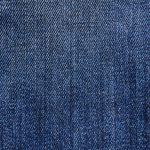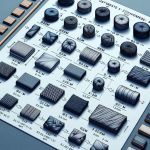I've always been fascinated by the rich texture and luxurious feel of velvet, but assessing its quality isn't straightforward. It starts with the type of fiber used—silk velvet usually tops the chart for its exquisite sheen and softness, while synthetic velvets offer affordability but can vary greatly in quality. The key lies in the density of the weave; a higher thread count generally indicates a finer fabric. But there's more to ponder, such as the weight of the fabric and how it reacts to light and touch. I'll delve into these aspects further, shedding light on what really makes a piece of velvet high quality.
Table of Contents
Key Takeaways
- Check the composition; silk velvet generally offers a luxurious feel and natural sheen.
- Assess the weave; tighter weaves indicate higher durability and quality.
- Feel the weight; heavier velvet usually signifies denser weave and richer color.
- Perform a stretch test; good recovery rate suggests long-lasting fabric resilience.
- Examine the pile; uniform, dense pile with consistent sheen indicates high quality.
Understanding Velvet Composition
When evaluating the quality of velvet, it's crucial to understand its composition. Velvet's luxurious texture depends on its fiber origin and production methods. Let's delve deeper into these aspects to grasp what makes certain velvets stand out.
Fiber origin plays a pivotal role. Velvet can be made from various fibers such as silk, cotton, or synthetic materials like polyester. Silk velvet, with its soft feel and subtle sheen, typically ranks highest in quality. It's the fiber choice for luxury due to its natural protein structure, providing unparalleled softness and a rich look. In contrast, cotton velvet offers durability and a matte finish, suitable for more frequent use items like furniture. Synthetic velvets, while less expensive, often lack the natural luster and feel of their natural counterparts.
Production methods also influence the quality. Traditional weaving techniques, where threads are densely packed, result in a finer, more durable fabric. Handwoven velvet, though more costly, often surpasses machine-produced velvet in both texture and durability. It's important to examine how the velvet is crafted, as this affects not only the feel and appearance but also how well it will wear over time.
Understanding these factors aids in making an informed choice when selecting high-quality velvet.
Identifying Weave Density
After understanding velvet's composition, let's examine how the density of the weave impacts its quality. A critical aspect to ponder is thread count, which refers to the number of threads per square inch. A higher thread count generally indicates a denser, and potentially more durable, velvet fabric. I'll explore how to accurately assess this characteristic.
Firstly, I scrutinize my hands across the fabric's surface. A velvet with a high thread count feels smoother and denser. The fabric's resilience against my fingers suggests tightly packed threads, which contribute to its overall strength and appearance. To further verify the thread count, I sometimes use a magnifying glass to visually inspect how closely knit the threads are. This manual check helps confirm the tactile observations.
Additionally, the type of loom used during the weaving process also plays a significant role. Traditional looms tend to produce a tighter weave compared to modern automated ones. This difference in loom type can affect the thread alignment and tension, which in turn influences the fabric's final texture and durability.
Understanding these aspects helps me judge the quality of velvet beyond its initial aesthetic appeal, ensuring I choose a fabric that combines beauty with resilience.
Assessing Fabric Weight
While considering velvet quality, it's also important to assess the fabric's weight. A heavier velvet often suggests a denser weave and a more luxurious feel. I find that when I pick up a piece of high-quality velvet, it has a substantial, satisfying heft to it. This isn't just about preference; the weight directly impacts how the fabric drapes and flows.
Heavier velvet generally offers better durability. It's less prone to stretching out of shape compared to lighter alternatives. Speaking of fabric stretchability, it's important to note that while some stretch is good for flexibility and comfort, too much can compromise the fabric's structure and appearance. Weight becomes a balancing act.
Moreover, color variety in velvet can be influenced by its weight. Rich, deep colors are often more vibrant in heavier velvets. The thickness allows the dye to take more profoundly, resulting in a lush and dynamic hue. When I'm out shopping, I always check how the color of the velvet looks under different lighting conditions. Quality velvet should maintain its color richness and not fade unevenly or quickly.
Evaluating Fiber Elasticity
Evaluating the elasticity of velvet fibers is essential for understanding how the fabric will perform and feel. When I check the elasticity, I perform a stretch test which is quite important but highly revealing. I gently stretch a small section of the velvet to see how it responds when pulled. It's not just about how far it stretches, but how well it returns to its original shape—that's what we call the recovery rate.
A good quality velvet should have a high recovery rate, snapping back promptly after being stretched. This is vital because it indicates resilience and durability. If the velvet doesn't recover well, it might sag or stretch out of shape with regular use, which isn't ideal for any garment or upholstery.
I always advise paying close attention during this test. You're not just feeling for stretchability; you're evaluating how the fabric behaves under stress. This test doesn't require any special tools and can be a great indicator of quality. Remember, while the stretch test is important, it's just one aspect of the fabric's overall quality. However, it gives significant insight into the longevity and performance you can expect from the velvet.
Checking Pile Depth
Next, I'll look at the pile depth of the velvet, which is key to judging its quality.
I'll measure how long the pile is and check how dense it feels.
These factors help determine if the velvet is luxurious and durable.
Measuring Pile Length
To determine a velvet's quality, measure the pile length using a ruler or tape measure. This measurement gives a clear indication of how plush the fabric is. You'll want to check several points across the fabric to guarantee pile uniformity. If the length varies too much, it's likely not high-quality velvet.
Next, compare the sheen at different parts of the fabric. Quality velvet should have a consistent, rich luster when light hits it. Variations in sheen often suggest uneven pile length or density, which can affect the overall look and feel.
Assessing Pile Density
After measuring pile length, it's crucial to evaluate the density of the velvet's pile for overall quality. Pile density greatly influences how the fabric feels and lasts. Here's how I go about examining it:
- Feel the fabric: The denser the pile, the plusher the velvet. It should feel full and luxurious under my fingertips.
- Inspect visually: Good quality velvet has consistent color and texture across its surface. Any patchiness might indicate poor density.
- Press down gently: When I press on the velvet, it should spring back quickly if it's dense. If it stays compressed, the pile might be too sparse.
- Compare samples: I always compare with other velvets to check for pile uniformity and texture consistency.
Judging Surface Luster
Evaluating the surface luster of velvet can reveal much about its quality. When I look at velvet, the first thing I notice is how it shines. Good quality velvet should have a rich, consistent sheen. This sheen consistency is key. It shouldn't look patchy or dull in areas unless it's part of the design. Color uniformity plays a big role here too. The color should appear even across the entire surface. If parts of the velvet look faded or discolored, it's likely not the best quality.
To judge the luster effectively, I hold the fabric under a soft light and tilt it back and forth. This movement helps me see how the light plays across the fabric's surface. High-quality velvet will reflect light smoothly and evenly. It'll have a sort of glow that's hard to miss. If the fabric looks flat or matte, it mightn't be the premium stuff.
Testing Color Fastness
I always check the color fastness of velvet by gently rubbing it with a damp cloth to see if any dye comes off. This simple test reveals a lot about the fabric's quality and how it'll behave in different conditions. If the cloth picks up color, it's a sign of poor color fastness, which means the fabric might bleed during washes or when it's used.
Here's how you can test velvet to avoid issues like color bleed:
- Damp Cloth Test: Before buying, use a slightly wet white cloth to rub the velvet. Check the cloth for any dye transfer.
- Wash Test: Wash a small sample of the velvet fabric. Observe the water and any adjacent fabrics to see if the dye bleeds.
- Dry Test: After the wash, lay the velvet flat to dry. Examine if there are any changes in color saturation or if the color spreads.
- Light Exposure: Place the fabric under sunlight for a few hours. Fading or color change indicates poor resistance to light and potential issues in maintaining its vibrant look.
Understanding these aspects helps in evaluating the durability and practicality of velvet for various uses.
Feeling for Softness
Besides testing for color fastness, it's important to feel the velvet to assess its quality. When I run my fingers over the fabric, I'm checking for how soft it feels. High-quality velvet should feel smooth and plush, not rough or brittle.
I use my touch sensitivity to make this judgment. As I glide my hand across different samples, I notice that the best ones have a consistent, luxurious texture. This pivotal experience is vital; it tells me a lot about the weave and the type of fibers used.
For a precise texture comparison, I often compare a known high-quality velvet with the one I'm evaluating. This helps me feel subtle differences that mightn't be obvious at first touch. I look for a velvet that responds well to pressure but quickly returns to its original state without leaving any marks or impressions.
Inspecting Backing Material
Next, let's examine the backing material of velvet, which is essential for determining its quality.
I'll demonstrate how to identify different types of backing and assess their durability.
This step is vital because a strong backing supports the fabric's overall longevity and appearance.
Identify Backing Types
The backing material of velvet can greatly influence its overall quality and durability. When I'm checking velvet, I focus on several key aspects of the backing that tell me more about the fabric's quality. Here's what I look for:
- Backing Flexibility: The backing should be flexible yet resilient. If it's too stiff, it can affect how the velvet drapes and feels.
- Backing Color: A consistent backing color indicates good dye processes were used, which often means better overall fabric quality.
- Material Type: Cotton or polyester backings are common. Cotton offers breathability, while polyester provides durability.
- Weave Tightness: A tightly woven backing supports the velvet pile better, ensuring it stays upright and plush longer.
Knowing these details helps me determine the velvet's potential performance and aesthetic.
Assess Backing Durability
After examining the type and quality of a velvet's backing, I also verify its durability to guarantee long-lasting wear. I check the backing strength by gently tugging at it. If it feels firm and doesn't stretch excessively, that's a good sign. I also assess the adhesive quality by rubbing the surface to see if any fibers come loose. A well-adhered backing won't shed easily, which indicates superior craftsmanship.
Tough, resilient backing supports the plush pile, ensuring the velvet can withstand everyday use without separating or wearing thin. It's essential for the velvet to pass these tests, especially if it's intended for high-traffic usage like upholstery or heavy drapery. This approach helps me feel confident in the velvet's overall quality.
Durability Considerations
When evaluating velvet's quality, it's important to take into account its durability and how it withstands wear and tear. Here's how I explore this aspect:
- Color Consistency: I check for how evenly the color is distributed across the fabric. High-quality velvet shouldn't have any blotchy areas or faded patches, even after some use.
- Stitch Integrity: The stitching should be secure without any loose threads. This is vital because well-sewn seams guarantee the velvet holds up over time, especially along edges and corners that might see more wear.
- Flexibility and Recovery: I gently stretch a small section of the velvet to see if it springs back to its original shape. A velvet that retains its form after being stretched slightly is likely to be more durable.
- Surface Wear: I rub my hand along the surface to see if the fabric pills or shows signs of thinning. Quality velvet should resist surface wear and maintain its plush texture even with frequent use.
Understanding these aspects helps me gauge the resilience of the velvet, ensuring that it not only looks luxurious but also lasts longer, providing real value for the investment.
Frequently Asked Questions
Can Velvet Fabric Be Used for Outdoor Furniture?
I wouldn't recommend velvet for outdoor furniture as it lacks weather resistance and can experience significant color fading when exposed to the elements. It's better suited for indoor use to maintain its quality.
Is Velvet Suitable for People With Allergies?
To determine Velvet's suitability for allergy sufferers, it is crucial to check for hypoallergenic labels and conduct allergy tests. Some velvets trap fewer allergens, making them better options for sensitive individuals.
How Does Velvet React to Pet Hair?
Velvet often attracts pet hair due to static. I've found that regular vacuuming and using a lint roller are effective cleaning methods to keep it looking pristine and free from pet hair.
Are There Eco-Friendly Velvet Options Available?
Yes, there are eco-friendly velvet options available. They're made using sustainable sourcing and recycled materials, reducing environmental impact. I always look for these when shopping to support greener fashion choices.
How Should Velvet Be Stored to Prevent Creasing?
I hang my velvet garments in a spacious closet to avoid creases. Using padded hangers is essential for crease prevention. Proper storage options, like avoiding folding, also keep the fabric in pristine condition.
- How Does Ring Spun Cotton Affect Garment Fit and Shape Retention? - August 13, 2024
- What Are the Challenges in Producing Ring Spun Cotton? - August 13, 2024
- Is Ring Spun Cotton Suitable for Plus-Size Clothing? - August 13, 2024







